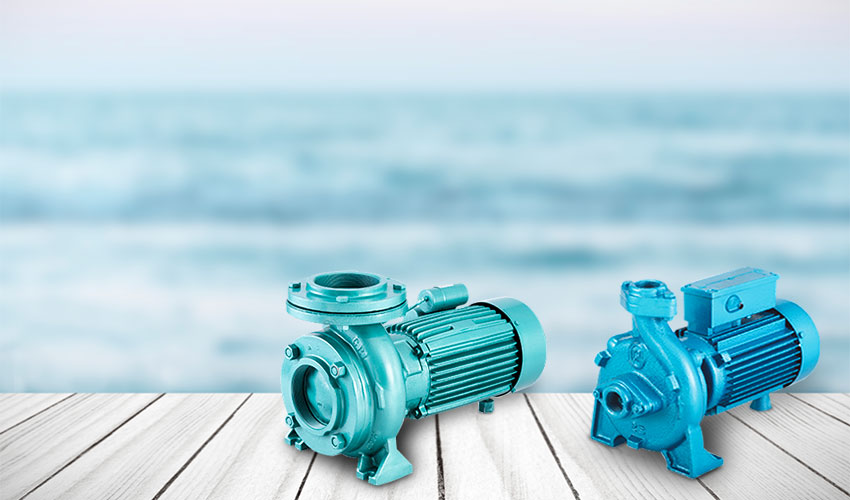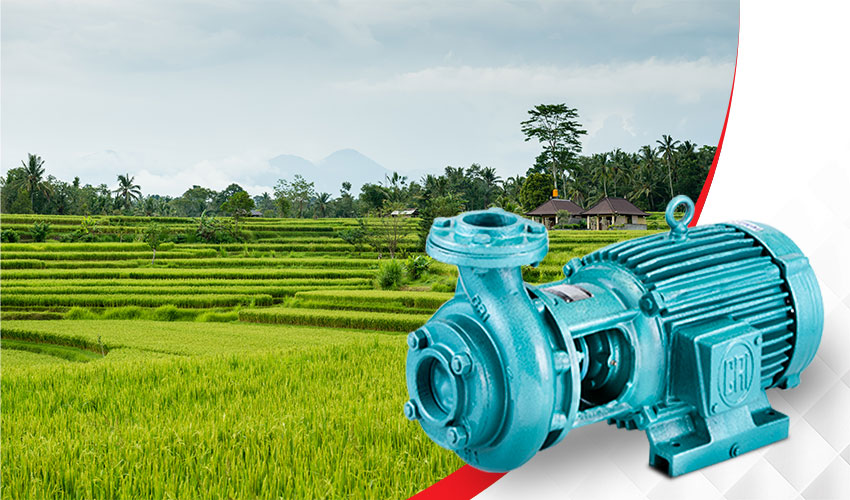Introduction of centrifugal Pumps
A centrifugal pump transfers fluid by applying rotational energy from one or more driven rotors, called impellers. Fluid enters the impeller’s axis and exits it along its circumference by centrifugal force through its vane tips. Pump impellers increase the fluid’s velocity and pressure while directing it towards the outlet. Casings are designed to restrict fluid from entering the pump, direct it to the impeller, then slow and control it before discharging.
Working Principle of Centrifugal pumps
The impeller is the critical component of a centrifugal pump since the fluid enters and exits at the impellerDepending upon the fluid that needs to be transferred, impeller design varies. The impeller is connected through a drive shaft to a motor and rotates at a high speed and accelerates the fluid out through the impeller vanes into the pump casing.
A pump casing can have a volute design or a diffuser design. Diffuser designs can be customed for specific applications. Volute cases are better suited to applications where fluids have entrained solids or high viscosity fluids.

Classification of centrifugal Pumps
In order to select a centrifugal pump, specific characteristics and application requirements should be taken into consideration. Some of them are discussed below:
Stage
Classification of centrifugal pumps based on stage defines the number of impellers. Single-stage centrifugal pumps, as the name suggests feature a single impeller. The construction is simple and can be easily maintained. Single-stage centrifugal pumps are designed typically to handle the large flow rate of the liquid and are commonly used in low-pressure applications.
Two-stage centrifugal pumps comprise of two impellers and are used in applications where medium pressure is a requirement.
Multi-stage centrifugal pumps feature more than three impellers and are used in high-pressure applications.
Split case
Centrifugal pump split case construction defines how the centrifugal pump develops pressure.
In an axial split case centrifugal pump, the impellers exert pressure by pushing liquid parallel to the pump shaft. In a radial centrifugal pump, the pressure is created by pushing the liquid perpendicular to the pump shaft.
Suction type
The suction type of a centrifugal pump determines how fluid enters the impeller. In a single suction pump, fluid enters only through one side of the impeller, and in a double suction centrifugal pump the fluid enters through both sides of the impeller.
Shaft
A Horizontal pump shaft is positioned horizontally and these centrifugal pumps are easy to install and maintain. As the name suggests vertical pumps have the shaft placed in a vertical plane. They have a unique shaft and bearing support configuration. They are mostly coupled to the motor.

Advantages of Centrifugal Pumps
Centrifugal pumps are versatile pumps and can be used in a wide range of industries and applications such as agriculture, chemical processing, food and beverage processing, mining, municipal and industrial wastewater management, and manufacturing. They are reliable and easy to maintain. They are widely used in industries that move large volumes of fluid with low to medium pressure. Centrifugal pumps are durable and have a low cost of ownership.
CRI pumps are designed to handle abrasive applications better, thereby reducing the cost of ownership and reducing the frequency of downtime due to parts being replaced. Our centrifugal pumps are designed to meet your requirements.
Frequently Asked Questions
1.How to increase discharge pressure in centrifugal pumps?
To increase the discharge pressure in a centrifugal pump, the number of impellers can be increased.
2.Which pump to use for low viscosity fluids?
Centrifugal pumps are the best choice to transfer low viscosity fluids.
3.What are multi stage centrifugal pumps used for?
Multi stage centrifugal pumps are used in Reverse osmosis ,Boiler feed water, water pressure boosting systems, mine dewatering ad so on.
4.What are axial centrifugal pumps used for?
Axial centrifugal pumps an be used to lift water used for irrigation and pumping water from reservoirs.
5.How to choose the right type of centrifugal pump?
To choose the right type of centrifugal pump it’s important to know what type of liquid(material handled) needs pumping as well as the pressure, in which direction ( vertical or horizontal), and where within an installation location this will be done.



